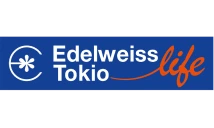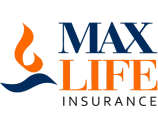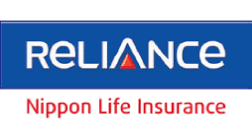
LIC is the oldest and the first life insurance company in India which was the only life insurer till the year 2000. Even after private players were allowed to enter the life insurance market, LIC remained the undefeated company in terms of customer base and market capitalization. Even today LIC enjoys immense trust among its customers and is a leading life insurance company in the market.
LIC offers a range of life insurance plans and Unit Linked Insurance Plans (ULIPs) are one type of insurance that the company offers. ULIPs are life insurance plans that invest the premium in the capital market. The investments are, then, allowed to grow and you can earn market-linked returns. Given the potential of attractive returns and the flexibility that ULIPs allow, they are quite popular among individuals.
Table of Contents
LIC’s New Endowment Plus is the unit-linked plan offered by LIC. The plan allows you the choice of four investment funds which are as follows –
- Bond Fund
- Secured Fund
- Balanced Fund
- Growth Fund
You can choose any of these funds for investment as per your risk profile. While a Growth Fund is an equity-oriented fund that is risky, Bond and Secured Funds are debt funds that give stable returns. Balanced Fund combines equity and debt investment to give you stability along with higher returns.
The premiums that you pay for LIC’s New Endowment Plus plan would be invested in any of the selected funds based on the fund’s Net Asset Value (NAV). Do you know what NAV is all about?
What is LIC NAV?
LIC NAV is the value of one unit of the fund that you choose. To understand NAV further, let’s understand how the fund works. The premiums which are collected from policyholders are pooled in one corpus. Thereafter, the corpus is invested in stocks and securities of different companies. Against each investment, a certain number of stocks or shares can be bought. When the total corpus is invested you get the total number of shares and stocks bought and that allows you to calculate the NAV. The formula for NAV calculation is as follows –
NAV = (market value of the portfolio of the fund / total number of securities bought)
Let’s understand with an example –
Suppose 100 investors contribute INR 10,000 each building a corpus of INR 10 lakhs. Now, this corpus is invested as per the following details –
10,000 shares of M/S ABC are bought @INR 20 each equalling INR 2 lakhs
5000 shares of M/S XYZ are bought @ INR 40 each equalling INR 2 lakhs
20,000 shares of M/S DEF are bought @ INR 30 each equalling INR 6 lakhs
Total shares bought = 35,000
NAV = 1000000 / 35000 = INR 28.57
Features of LIC NAV:
- NAV represents the per-unit price of the fund
- When you invest a lump sum amount in the fund, the units that you can buy would depend on the fund’s NAV. The number of units would be calculated as the amount of allocated premium divided by the NAV. So, if, in the above example, you invest INR 12,000 at the NAV of INR 28.57, you would get about 420 units
- The value of NAV is expressed correctly to four decimal points
- The NAV changes every day as the value of the company’s stocks into which the portfolio has been invested change every day
- NAV can increase or decrease at any time
- If the NAV increases, you get a profit when you sell. In case of a decrease, you suffer a loss
- There is a repurchase value and sale value associated with LIC NAV. Repurchase value is the value at which you can purchase the units of the fund. The sale value is the value at which you can sell units of the fund if you want to withdraw money from your policy
LIC NAV for the day:
Currently, LIC offers only one unit linked plan which is called LIC’s New Endowment Plus Plan. The plan was launched on 19th August 2015. The LIC NAV of the four funds of the plan as on 3rd October 2019 are as follows:
| Name of the fund | LIC NAV on the date of launch | Current LIC NAV | % change | Repurchase Value | Sale Value |
| Bond Fund (ULIF001201114LICNED + BND512) | 10.00 | 14.3376 | 43.376% | 14.3376 | 14.3376 |
| Secured Fund (ULIF002201114LICNED + SEC512) | 10.00 | 13.7221 | 37.221% | 13.7221 | 13.7221 |
| Balanced Fund (ULIF003201114LICNED + BAL512) | 10.00 | 13.5890 | 35.89% | 13.5890 | 13.5890 |
| Growth Fund (ULIF004201114LICNED + GRW512) | 10.00 | 13.6810 | 36.81% | 13.6810 | 13.6810 |
So, understand LIC NAV before you invest in LIC’s unit-linked insurance plan. When you know the NAV you can check the units which would be allotted to you and the performance of the fund ever since its inception. The current LIC NAV shows the overall performance of the fund and should be checked before investment.
Read more:
Frequently Asked Questions
1. Do unit-linked plans guarantee returns?
No, the returns under unit-linked insurance plans are not guaranteed. They depend on the NAV movement which, in turn, depends on the performance of the capital market.
2. What are debt funds?
Debt funds are those which invest in different types of fixed-income instruments. Since the portfolio consists largely of securities promising fixed returns, risks under debt funds are very low.
3. Can I change funds if I want?
Yes, ULIPs allow switching between funds wherein you can shift your investments partially or fully from one fund to another. When you switch, the LIC NAV on that day would be applicable in redeeming the units to be switched.
4. Can I terminate the policy if the LIC NAV is reducing consistently?
Termination of the policy before the stipulated tenure is called surrender. Surrender in ULIPs is allowed only after the completion of five policy years. If five years have elapsed since you bought the policy you can surrender the policy and terminate the cover. Upon termination, the units would be redeemed as per the prevalent LIC NAV on the date of surrender.
5. Are returns from ULIPs taxable?
No, the returns that you earn from ULIPs are not taxable. Neither the maturity benefit nor the death benefit is taxable in your hands under Section 10 (10D) of the Income Tax Act.
Found this post informational?
Browse Turtlemint Blogs to read interesting posts related to Health Insurance, Car Insurance, Bike Insurance, and Life Insurance. You can visit Turtlemint to Buy Insurance Online.






























